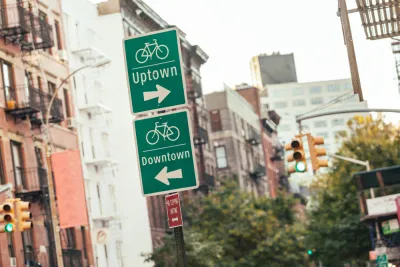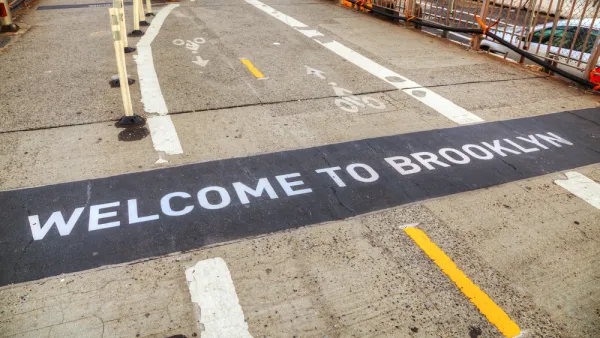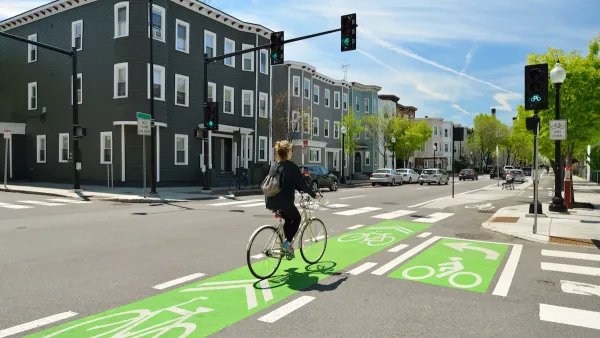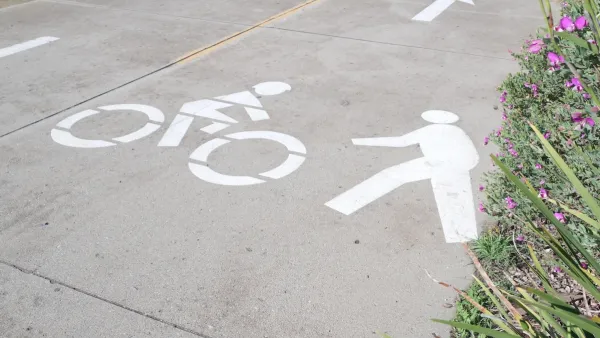Cycling advocates and environmental groups want to accelerate the expansion of bike infrastructure and fill crucial gaps in the city's bikeway network.

Environmental groups and cycling advocates in New York City are hoping to secure federal funding to build out and link the city's multi-use trails into a comprehensive network of greenways. According to Teri Carta, executive director of the Brooklyn Greenway Initiative, "without the greenways being connected, they are not able to deliver all of the benefits that they are capable of." Jose Martinez reports on the effort for The City.
"While City Hall has committed nearly $60 million through 2024 to annually expand the reach of bike lanes, the boosters of the five-borough greenway system envision larger swaths of car-free space appealing to more than just cyclists," writes Martinez. The goal is to expand open space available to communities for a variety of uses, not just moving bikes and people from place to place.
Around the country, cycling projects years in the making such as New York's 750-mile Empire State Trail and the 3,000-mile East Coast Greenway have gained steam in the past year. "The effort to obtain a chunk of Biden’s proposed transportation funding — which would include a broad scope of projects, including roads, bridges, mass transit and railroads — comes with New Yorkers increasingly prizing outdoor space, open streets and cycling during the pandemic." In 2020, New York City "added 45 miles of protected lanes and 29 miles of conventional lanes to a 1,375-mile bike lane network," which boosters now hope to improve and expand. "An infusion of federal money, the advocates say, could help connect missing links in a citywide network whose existing sections span the Hudson River in Manhattan, along Sunset Park’s industrialized waterfront in Brooklyn, the Bronx River and along the East River in Queens."
FULL STORY: Dream of Connected NYC Greenway Re-Envisioned as Path to COVID Recovery

National Parks Layoffs Will Cause Communities to Lose Billions
Thousands of essential park workers were laid off this week, just before the busy spring break season.

Retro-silient?: America’s First “Eco-burb,” The Woodlands Turns 50
A master-planned community north of Houston offers lessons on green infrastructure and resilient design, but falls short of its founder’s lofty affordability and walkability goals.

Delivering for America Plan Will Downgrade Mail Service in at Least 49.5 Percent of Zip Codes
Republican and Democrat lawmakers criticize the plan for its disproportionate negative impact on rural communities.

Test News Post 1
This is a summary

Test News Headline 46
Test for the image on the front page.

Balancing Bombs and Butterflies: How the National Guard Protects a Rare Species
The National Guard at Fort Indiantown Gap uses GIS technology and land management strategies to balance military training with conservation efforts, ensuring the survival of the rare eastern regal fritillary butterfly.
Urban Design for Planners 1: Software Tools
This six-course series explores essential urban design concepts using open source software and equips planners with the tools they need to participate fully in the urban design process.
Planning for Universal Design
Learn the tools for implementing Universal Design in planning regulations.
EMC Planning Group, Inc.
Planetizen
Planetizen
Mpact (formerly Rail~Volution)
Great Falls Development Authority, Inc.
HUDs Office of Policy Development and Research
NYU Wagner Graduate School of Public Service





























